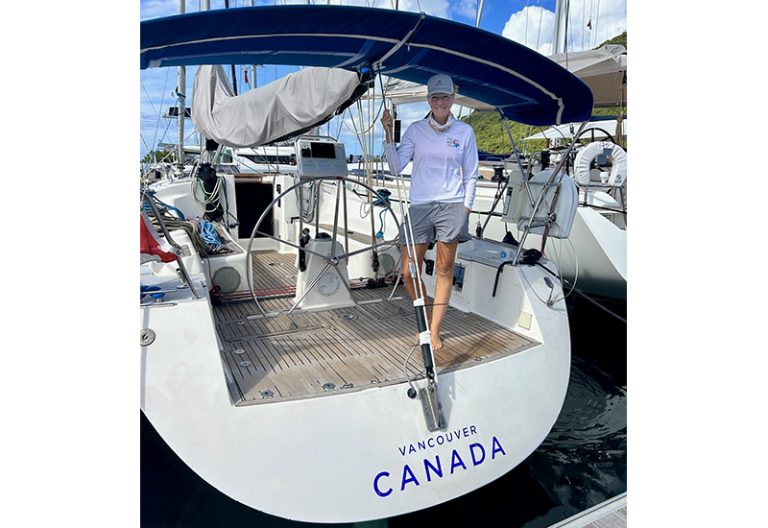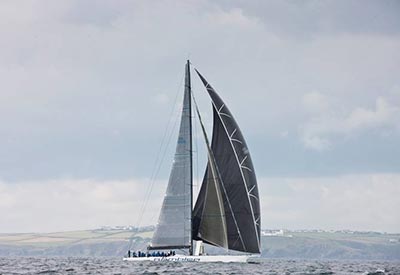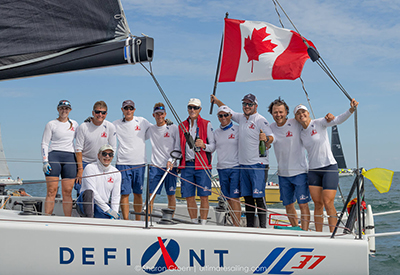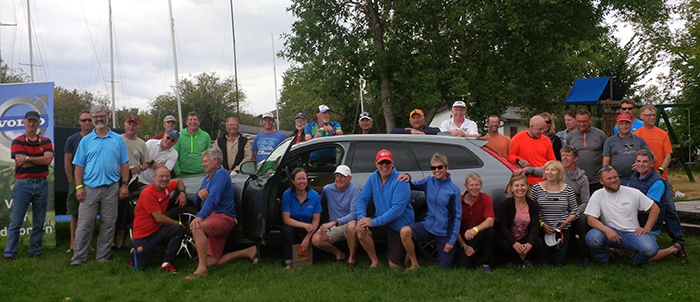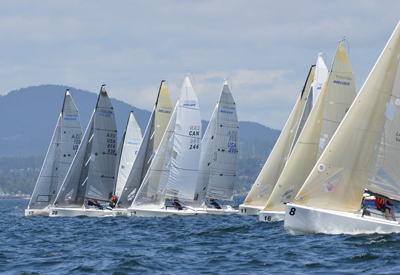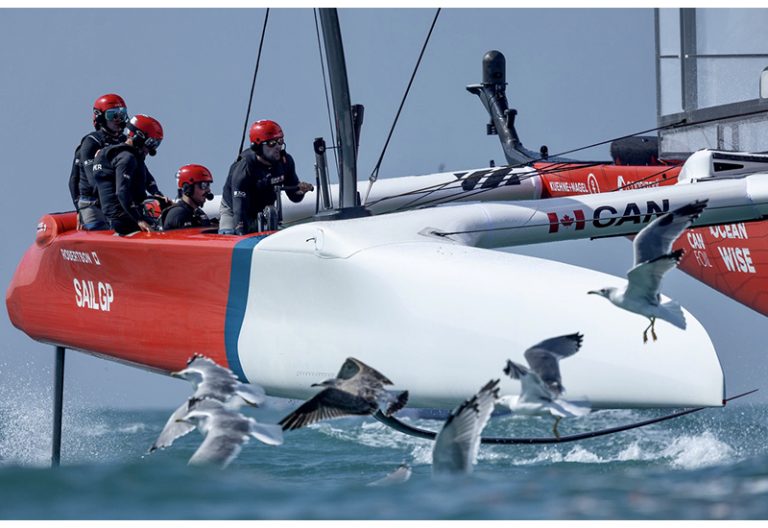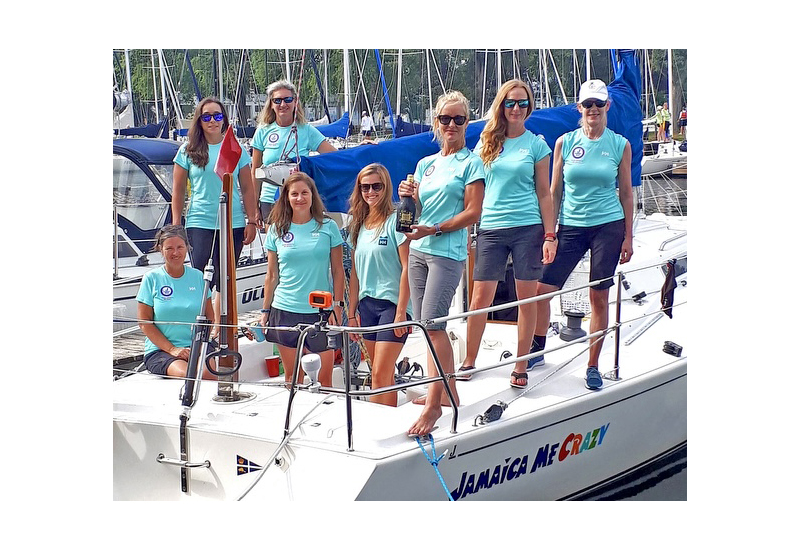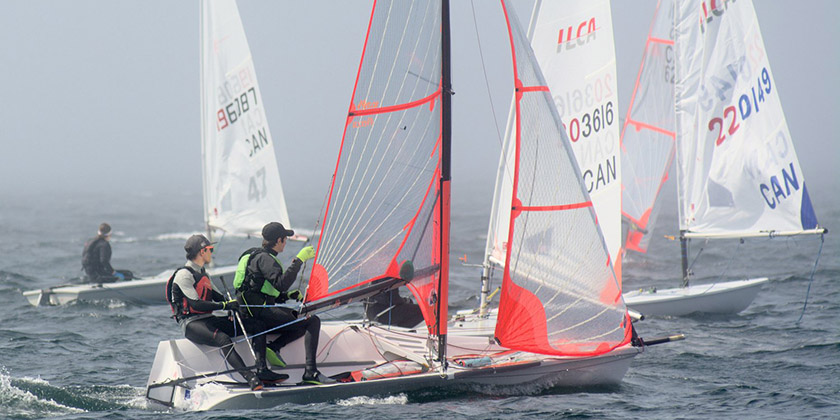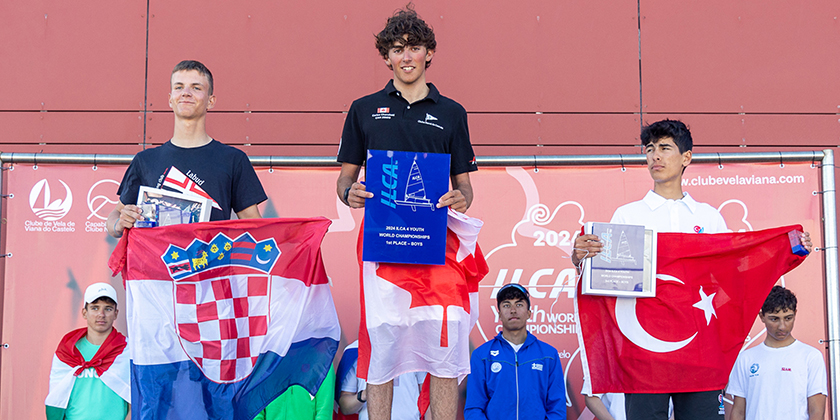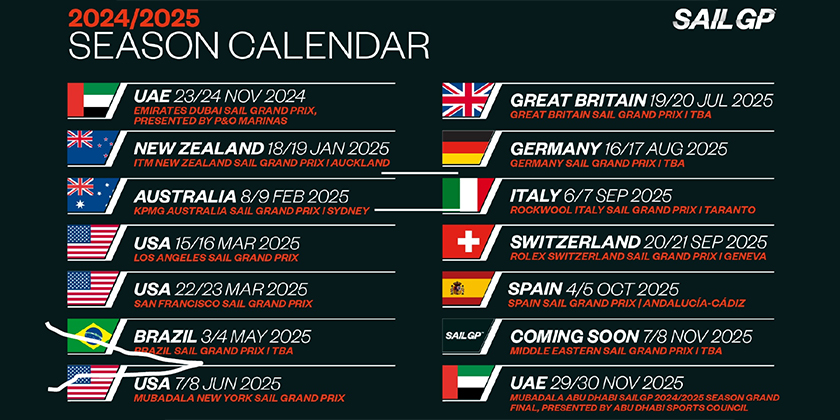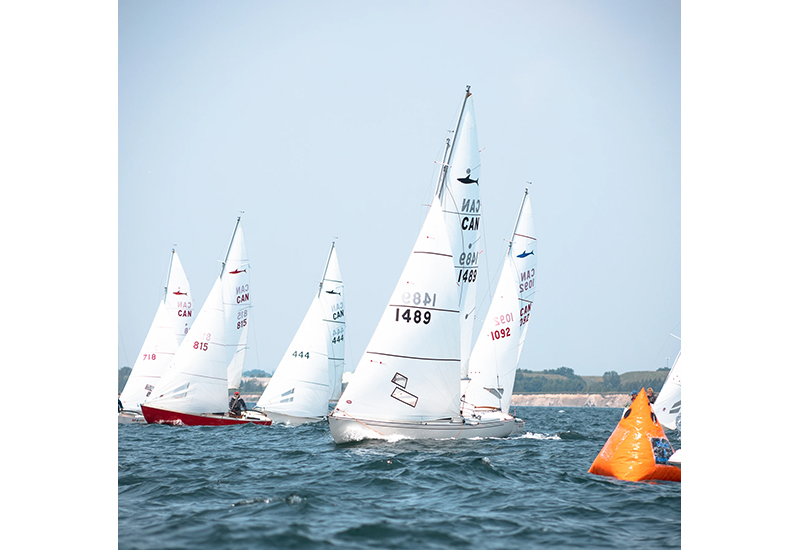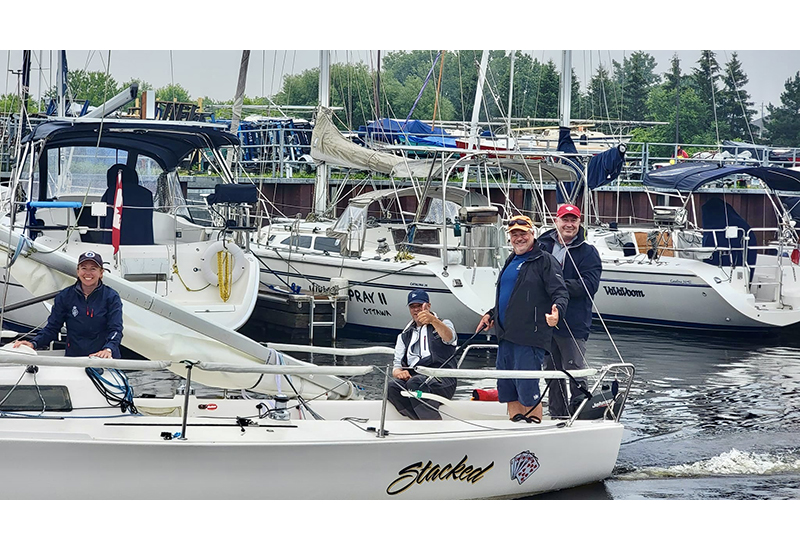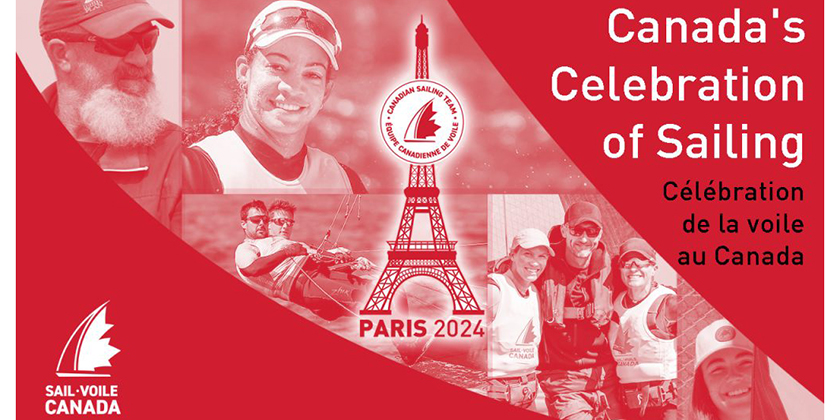Canadians Best Ever at DN NA’s
Mar 20, 2024
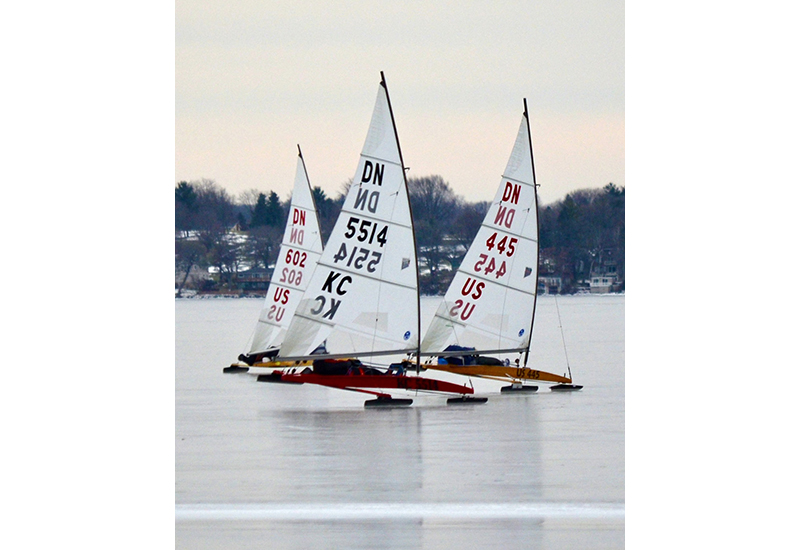
By John Curtis
Earlier this month, Canadian DN Sailors journeyed to Wisconsin and made a very strong showing at the DN North Americans finishing four boats in the top ten.
Over the past 4-5 years a keen group of sailors from Montreal and Kingston have been quietly honing their skills at the oldest form of competitive sailing – Iceboat racing.

The Canadian team made up of four sailors from Montreal and three from Kingston, set out for the North American Championships before actually knowing where the regatta would be held. This is not uncommon in iceboat racing because above all else we need sailable conditions. At least we knew we needed to drive West 🙂
The amazing thing about ice conditions is how quickly they can change with small changes in the weather. We lucked out with Lake Waconia. All week it was teetering on the edge of sailability. There was never any concern that it was not thick enough. We rarely sail on that kind of ice. Sailability is more complex. The day Robin Lagraviere arrived there was 18- 20 knots of wind but the layer of melted snow/slush on the surface was like wet cement.
Iceboats thrive because of the lack of friction. 2” inches of slush is iceboat purgatory. All you can do is wait for it to get cold. The weather gods smiled on Lake Waconia with a combination of warm during the day and below freezing most nights with very little snow and plenty of wind most of the time. One day it got super windy (over 30 kts) and lots of gear failed. I broke a mast and learned that there is such a thing as too much mast bend 🙂 DN’s are able to sail in a wide range of wind velocities because the mast is so flexible. We use extreme mast bend (sometimes almost curving through 90 degrees) to flatten the 60 sq ft sail.
When the racing started Robin and Jacek came out of the blocks fast, demonstrating they both had the speed and skill to be in the top five. Coming out of the blocks is an apt description because iceboat races begin with a running start which favours the fast runners, but skill can quickly make up for that advantage. Andre Babe, an Pan Am Games Medalist in the Flying Dutchman, qualified for the Gold Fleet in Waconia. Andre is no stranger to sailing fast boats. He has been the leader of this iceboat group, sharing his iceboat wisdom with all of us for many years and spurring us all on to better and better results. The 2024 North American Championships was a a “high ice” mark of that mentoring.
Following close behind were Peter Van Rossem and John Curtis from Kingston. Both of them had serious equipment failures in race 3. Peter was in 3rd when his runner split and John was in 8th when his mast broke. Apart from these two DNF’s none of the top 4 Canadians had a single race worse than 13th. This really demonstrated the kind of consistency it takes to be in the top group.

Jim Foster (Kingston) is just returning to iceboating after a hiatus due to a heavy work schedule that had him working in China for several years. He was in 7th place in the Silver fleet before an equipment failure ended his regatta. His boat was easily repaired but not in time to finish the races that day.
Jacek Marzenski (Montreal) is possibly the keenest of the group. He was raised in Poland – Mecca for iceboating and moved to Canada as a teenager. This winter he spent over a month training in Poland and became known by the Polish sailors as “the Canadian Spy”. Always said with raised eyebrows and a smile by the Poles.
He has definitely made the biggest improvements in the last year or so. He has always been fast but his recent retirement has seen him take his performances to the next level.
A note from André Baby
“In my 38 years of DN racing, this is by far the best performance Canada has achieved as a team: four skippers in the first eight in Gold fleet of the NA’s.
Apart from the somewhat challenging conditions (bumpy ice, sometimes strong wind), the regatta was well run, the enthusiasm level was high, and I enjoyed renewing old friendships.
“What makes DN racing great is the wide age range of the competitors: we had juniors in their teens competing with some 70 year olds , even a 90+ year old.
Hope to have a few more years in me to keep the juniors honest.
“I am part of the West Island group of Montreal, along with Jacek Marzensky, Robin Lagraviere and Nicolas Mabboux. We sail principally on Lake St Louis and Lake of 2 Mountains. We also join up with the Kingston guys, and/or New Englanders, depending on where the ice is.”
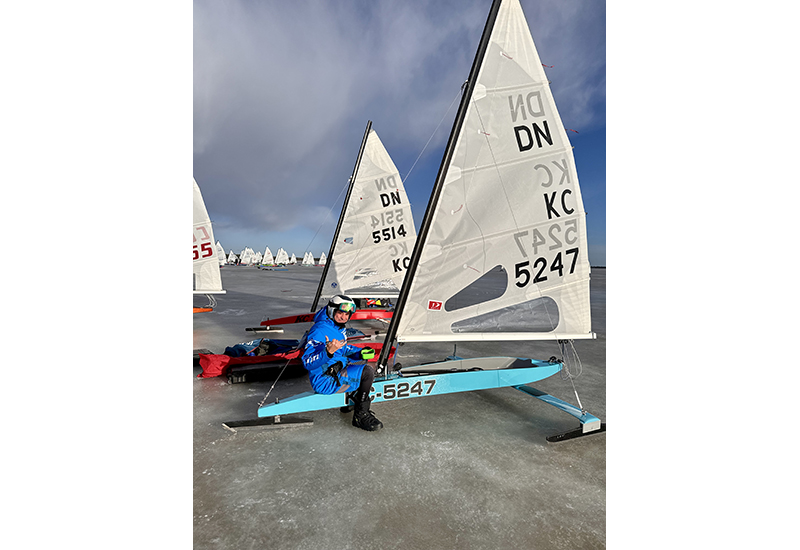
NAs Racing
The conditions each day were highly variable. Most morning races featured hard fast ice than got softer during the day and the wind was also quite variable ranging from 3 – 30 knots over the week, with ice conditions from hard and bumpy to wet and sticky. Sailing in less than 3 knots is pretty difficult unless the ice is hard. The other measure of the Canadian group’s marked improvement was the fact that they were fast in such a wide range of ice and wind conditions. This not only involves different technique but skill at selecting different runners and rig set ups for the changing conditions.
The racing was terrific, but perhaps the best part was the camaraderie between the Canadians. Learning to work together has been the key to their success. Sailing is a great sport that way. Most of the fun is in the problem solving and no one has a corner on the truth, so it is a process that benefits greatly from a collaborative approach and there is always a free flow of ideas, suggestions, and theories in the Canadian camp – sometimes assisted with a libation to the ice gods 🙂
Part of the camaraderie of this Canadian is the help they give each other when gear gets broken and sharing of equipment. No iceboat regatta happens without some late nights gluing boats back together in hotel rooms. The Iceboater’s motto “never leave home without epoxy, fibreglass and a hair dryer”. (Hair dryers are handy when you are in a rush to cure epoxy.) You never know when you might have to turn a hotel room into a workshop. Nicolas Mabboux had a difficult regatta with several equipment failures that required glue. When on the second last day his boat was beyond fixing in a hotel room, John Curtis loaned him a spare boat and Peter Van Rossem loaned him a mast. He had his best day on the ice of the entire regatta. Sailors helping sailors was the theme of this regatta.
About the DN
The most popular iceboat class in the world is the DN. Originally designed in 1936, the DN iceboat class has come a long way.
Some more historical info HERE. Many of the dimensions and weights are incorrect on this page BTW. Min boat weight is 46 lbs not 100 lbs for example.
The modern DN’s are still built out of wood reinforced with fibreglass as required by the class rules but many of the components are carbon fibre like the masts, runner bodies, etc. The boats now reach speed in excess of 50 knots on clear ice and 15-18 knots of wind. This might sound scary, but one gets used to it quickly. In many ways it’s more like driving on the highway than sailing and as with highway driving, most people get comfortable with the speed 🙂 One thing is for sure there are far fewer accidents and injuries on the ice than the 401 🙂
While the Canadian’s are an especially tight knit group, the entire fleet (mostly Americans) are a fantastic group of people who encourage each other to be the best they can be. It really is one of the best fleets around. They encourage newcomers have an active program to attract women and youth to the sport by providing free boats and coaching. This later effort is picking up steam, but what we really need more of is ice. If you have great local ice, get connected with the Canadian iceboat scene by emailing kingston-iceboating@googlegroups.com.

